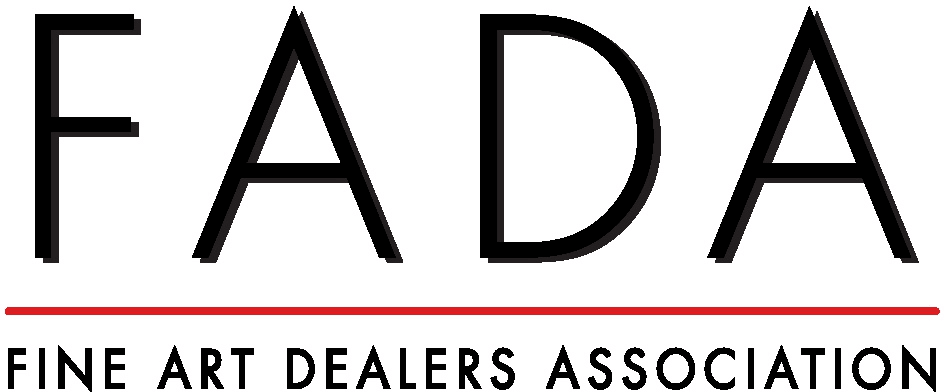Lee Hall, an abstract landscape painter who served as president of the Rhode Island School of Design in the 1970s and ’80s and wrote a hotly contested biography of the painters Elaine and Willem de Kooning, died on April 17 in Northampton, Mass. She was 82.
Margaret Horsnell, a friend, said the cause was gastric cancer.
Ms. Hall specialized in lyrical, evocative landscapes whose flat color planes and geometric forms alluded to the natural world rather than describing it. “They are about nuances of weather and nuances of feeling, with just the right small shift of color and form to make her intentions quite clear,” the critic John Russell wrote in The New York Times in 1979.
She showed at the Betty Parsons Gallery, which played a pivotal role in advancing the work of Jackson Pollock, Mark Rothko, Clyfford Still and other artists of the New York School. After Ms. Parsons died in 1982, Ms. Hall wrote her biography, published in 1991 as “Betty Parsons: Artist, Dealer, Collector.”
While exhibiting at the Parsons gallery, Ms. Hall also served as president of the Rhode Island School of Design; appointed in 1975, she was asked to deal with fiscal chaos and difficult faculty politics. Her tenure was marked by conflict, as she struggled, with some success, to end the practice of deficit spending and increase enrollment.
She was less successful in coaxing more work and more involvement in campus life out of teachers accustomed to a three-day workweek. Faculty members responded by organizing a union drive and, in early 1983, going on strike. To reinforce the message, they collected quarters to buy Ms. Hall a one-way ticket back to New York. She left the school later that year.
In a speech to the School of Educational Management at Harvard in 1980, Ms. Hall listed her criteria for the qualities needed by a college president: “the aloofness of a cat; the cunning of a fox; the eye of an eagle; the hide of an elephant; the slipperiness of an eel; the courage of a lion; the stubbornness of a mule; the tenaciousness of a terrier; and the wisdom of an owl. To which should be added: a heart of gold; nerves of steel; and a stomach of iron.”
Her biography “Elaine and Bill: Portrait of a Marriage,” published in 1993, caused an uproar. Based in large part on extensive conversations with Ms. de Kooning, a close friend, it offered an unsparing picture of heavy drinking and frequent affairs indulged in by both partners and credited Ms. de Kooning’s relentless campaigning for her husband as a major factor in his success.
The book was a ripsnorter, the author and art critic Eleanor Munro wrote in The Los Angeles Times, with “all the ingredients for a fast run and a quick film script: sex for sale, falling-down drunkenness, big money, an ‘explosive marriage’ come apart, then recouped, world-class artists swinging fists and flinging paint.”
Many critics found the work repellent. Friends of the de Koonings, especially those who had cooperated with Ms. Hall, expressed outrage and a sense of betrayal.
Joan Ward, a mistress of de Kooning’s and the mother of his only child, issued a statement calling the book “a practically illiterate smear of Bill and his painting, plus a sordid, demeaning picture of Elaine.” Its signal faults, she wrote, were “lack of research, identification of sources, and a total misunderstanding of a whole era and the painters involved.”
Ms. Hall shrugged off the criticism. “Don’t ever underestimate the political fervor of the art world,” she told The Washington Post. “It’s a very tight group, and they’re trying to maintain a myth.”
Lee Hall was born on Dec. 15, 1934, in Lexington, N.C. Her father, Robert, and her mother, the former Florence Fitzgerald, divorced when Lee was young, and she grew up with her mother in Florida.
Resisting pressure from her mother to attend secretarial school, she returned to Lexington after high school to live with her grandmother and enrolled in the Woman’s College of the University of North Carolina, in Greensboro (now the Woman’s College of the University of North Carolina at Greensboro), where she studied with the abstract painter John Opper. She received a bachelor of fine arts degree in 1955.
She continued her education at New York University, earning a master’s degree in art education in 1959 and a doctorate in creative arts in 1965. She went on to do postdoctoral work at the Warburg Institute in London.
While working toward her doctorate, she taught at Keuka College in Keuka, N.Y., and Winthrop College in Rock Hill, S.C. In 1965 she was named head of the art department at Drew University in Madison, N.J.
After leaving the Rhode Island School of Design, Ms. Hall took a senior executive position at the Academy for Educational Development in New York, a nonprofit group that organized educational, health and economic programs for underprivileged students in the United States and abroad.
Dismayed by trends in the art world, she stopped showing her work after the Betty Parsons Gallery closed, shortly after Ms. Parsons’s death. But in 2014 she began exhibiting again at the Jerald Melberg Gallery in Charlotte, N.C.
Ms. Hall, who lived in South Hadley, Mass., leaves no immediate survivors.
In addition to her books on Ms. Parsons and the de Koonings, Ms. Hall wrote two monographs, “Wallace Herndon Smith: Paintings” (1987) and “Abe Ajay” (1990). She also wrote a political history of the fashion industry, “Common Threads: A Parade of American Clothing” (1992), and “Athena: A Biography” (1997), a study of the Greek goddess.


